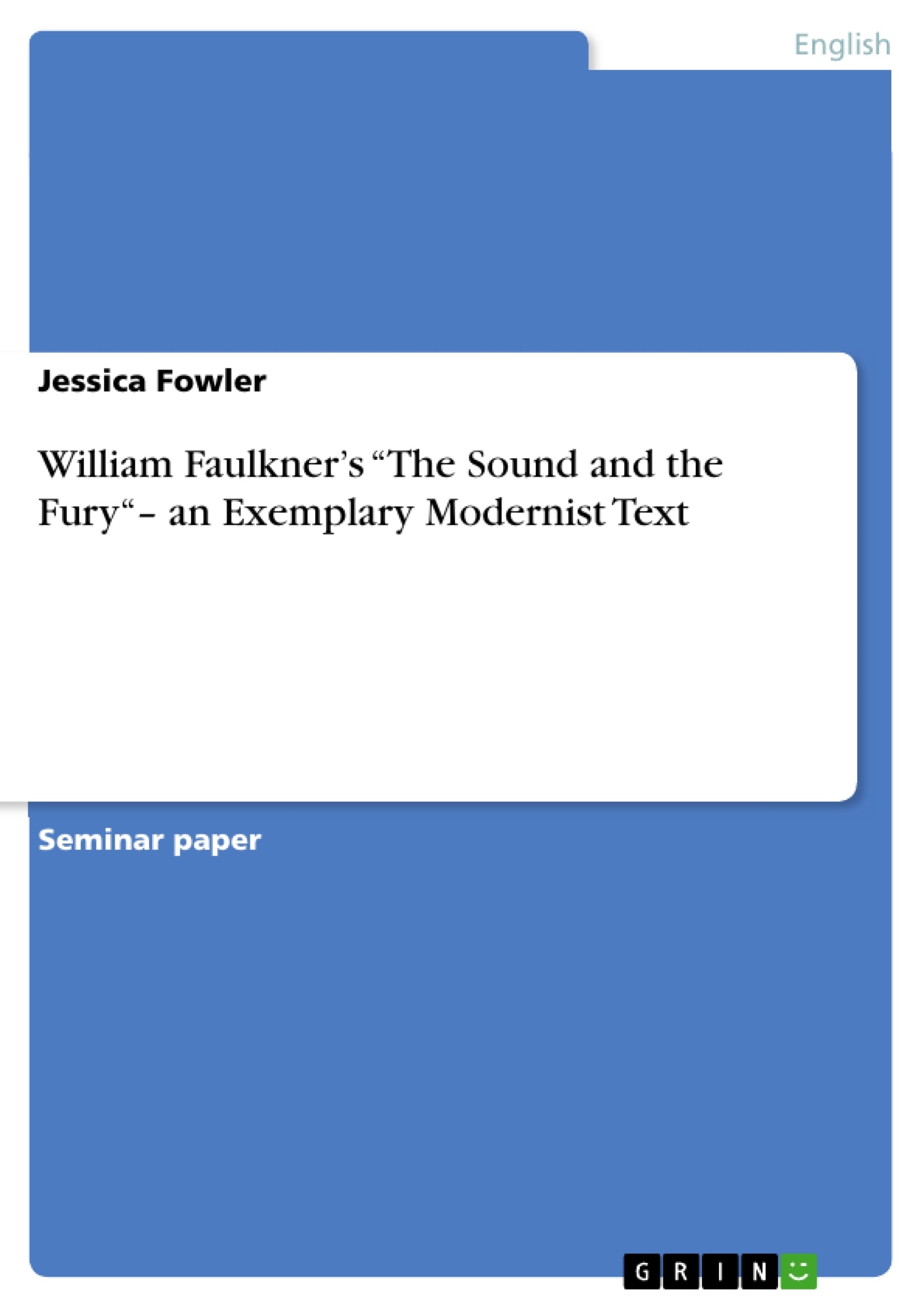William Faulkner’s “The Sound and the Fury” is considered “one of the greatest [Modernist] novels of the 20th century” (Churchwell), but what exactly qualifies it as such? To answer this question I will start by looking at what Modernism can be defined or classified as which means looking at its historical background as well as stylistic and thematic characteristics. After having done so I will examine Faulkner’s text in close comparison to these results and identify the commonalities along with the differences of theory and practice. In the process I will go into detail while analyzing some of the most striking characteristics of the novel in order to clarify their importance for Faulkner’s work as a whole.
Inhaltsverzeichnis (Table of Contents)
- Introduction
- Modernism
- Historical Background
- Stylistic and Thematic Characteristics
- The Sound and the Fury
- Background and Summary
- Historical Analysis
- Slavery and Economic Decline
- Southern Values and Gender Roles
- Technical Analysis
- Composition
- Language
- Themes and Symbolism
- Shadows
- Quentin's Watch
- Jason's Greed
- Caddy's Innocence
- Order and Chaos
- Religion
Zielsetzung und Themenschwerpunkte (Objectives and Key Themes)
This paper aims to explore the modernist qualities of William Faulkner's "The Sound and the Fury" by first defining Modernism through its historical context and stylistic and thematic characteristics. The paper will then analyze "The Sound and the Fury" in relation to these definitions to demonstrate the novel's adherence to and deviations from modernist conventions.
- The historical context of Modernism, particularly the impact of World War I.
- The stylistic and thematic characteristics of Modernist literature.
- The analysis of "The Sound and the Fury" as a modernist text.
- The examination of key themes and symbols within the novel.
- The exploration of Faulkner's unique artistic vision and contribution to Modernist literature.
Zusammenfassung der Kapitel (Chapter Summaries)
The introduction sets the stage by highlighting the significance of "The Sound and the Fury" as a pivotal Modernist novel and outlining the paper's methodology.
Chapter 2 delves into the definition of Modernism, exploring its historical roots in the early 20th century, particularly the impact of World War I. This chapter examines how the war's devastation and its social, political, and technological repercussions influenced the emergence of Modernism as a literary movement. It also discusses the stylistic and thematic characteristics that define Modernist literature, such as a departure from traditional narrative structures and a focus on fragmentation, subjectivity, and the exploration of complex psychological themes.
Chapter 3 focuses on "The Sound and the Fury," providing an overview of its background and a brief summary of the plot. It then delves into the novel's historical context, exploring its connection to the American South and its portrayal of themes like slavery, economic decline, and changing gender roles. The chapter further explores the novel's unique technical aspects, including its innovative compositional structure, the use of stream-of-consciousness narration, and the intricate interplay of language and symbolism.
Schlüsselwörter (Keywords)
The key terms and concepts explored in this paper include Modernism, William Faulkner, "The Sound and the Fury," historical context, World War I, stylistic characteristics, thematic analysis, stream of consciousness, Southern literature, slavery, gender roles, symbolism, and technical innovation.
- Arbeit zitieren
- Jessica Fowler (Autor:in), 2013, William Faulkner’s “The Sound and the Fury“– an Exemplary Modernist Text, München, GRIN Verlag, https://www.grin.com/document/281605



